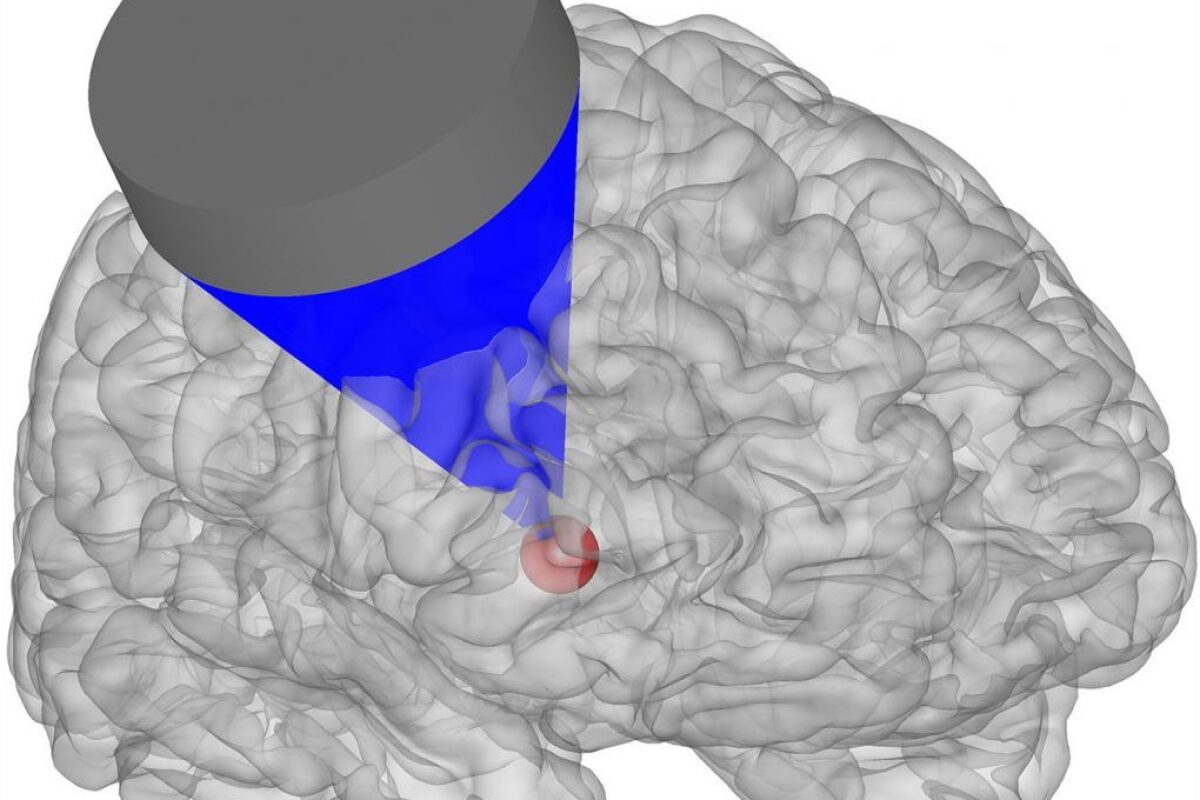There are a lot of things hinted at here. focusing certainly matters and integration with 3D mapping as well. This work is confirming lasting alteration.
Fully mapping a brain and then using the ultrasound to affect a cubic centimeter must be useful and interesting. Repeating this brain to brain will be a huge breakthrough.
now imagine mapping brain flaws triggering tremors. Not good. Yet hitting it with an ultrasound may cause beneficial change.
We will need real brain simulations and plenty of subjects in order to develop the data and best practice. This will be important.
.
Ultrasound brain stimulation changes monkey behavior directly
May 21, 2020
https://newatlas.com/medical/ultrasound-pulses-brain-stimulation/
Targeting a specific brain region with ultrasound pulses can affect the behavior of monkeys
University of Utah
The brain is a difficult organ to treat – medications have a variety of side effects and surgery is dangerous and invasive. But now, researchers at the University of Utah have shown how ultrasound can be used to affect specific regions of the brain, and even influence behavior in monkeys.
In recent years, scientists have directed ultrasound pulses into the brain for a range of reasons. The technology has been seen to pry open the blood-brain barrier, allowing drugs in that can treat conditions like Alzheimer’s. Other studies have used ultrasound to improve dementia symptoms through increased expression of certain enzymes and proteins. And one even appeared to “jump-start” the brain of a coma patient.
The Rochester researchers wanted to see whether they could use the technique to control specific behaviors. By pointing ultrasound pulses at specific parts of the brain, the membranes of neurons there will oscillate, activating them and affecting the behavior that those neurons control.
To test it out, they had two macaque monkeys complete a simple choice task, which is often used to diagnose damage from strokes. Basically, two targets appear in front of the animal – one on the left, and one on the right. Healthy animals will tend to look at whichever target appears first, but affected animals will favor the target on the same side as their stroke occurred.
For the new study, the team investigated whether they could change whether the monkeys looked left or right, regardless of which target appeared first. Using the right frequencies of ultrasound and targeting neurons in the frontal eye fields (FEF), the team managed to effectively control which way they looked.
Activating the FEF on the left side of the brain made the animals look to the right target more often, while activating the right-hand FEF had them look left. On average, the monkeys showed a two-to-one bias compared to default.
The team says that this experiment demonstrates that there are alternatives for treating mental and neurological disorders besides drugs or invasive surgeries. The ultrasound waves are inaudible and can’t be felt at all by the subjects.
“The paper shows that ultrasound can produce strong effects, up to the point of influencing behavior,” says Jan Kubanek, lead author of the study. “And changes in behavior is what we ultimately care about. For instance, we may be able to correct poor decision-making or at least reduce a person’s tremor in the hand.”
The research backs up previous studies in controlling monkey behavior. In this case the team used short pulses of ultrasound, finding that even 40 seconds was enough to trigger changes that lasted hours. The researchers say that longer pulses of 40 minutes, for example, could invoke benefits that may last weeks at a time.
Clinical trials are hoped to begin in around three years to treat patients with depression.
The research was published in the journal Science Advances. The team describes the work in the video below.
Ultrasonic Treatment
Source: University of Utah

No comments:
Post a Comment